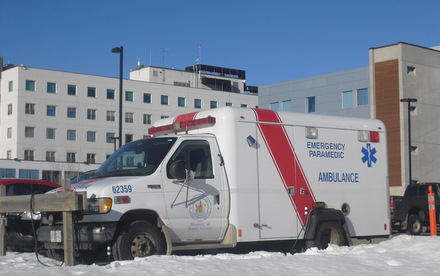No 3rd Party Provider For NH Patient Transfers
By 250 News

Prince George, B.C. - Northern Health has decided to maintain its arrangement with the B.C. Ambulance Service for transferring low-acuity patients, after efforts to partner with a private service provider proved unsuccessful.
Low-acuity patients are those who don't require care from paramedics during transport. The health authority issued a Request-for-Proposal for a patient transport pilot project and received six proposals, two of which were shortlisted. But NH Director of Business, Finlay Sinclair, says after careful evaluation of both proponents' business cases, "the benefit from a fiscal perspective just wasn't big enough to make a move at this point in time."
Sinclair says Northern Health didn't go into the RFP process because of a service delivery problem with BCAS. "We did this because other health authorities have been able to implement it and have some cost-savings in other locations, so we looked at it from a strict dollar perspective."
"But, when you look at our topography, our geography, our demographics and the fact that we do the fewest amount of transfers in British Columbia in our health authority -- all of those factors combined just don't drive a business case enough to make a change at this point in time," he says.
"In general, we don't have the type of transfers for services that some of the retirement areas have -- in the Okanagan, Lower Mainland -- we just don't seem to move the patients that other health authorities move in quantity."
So, in addition to providing all air ambulance service, 911 emergency, critical and monitored-care transfers, the B.C. Ambulance Service will continue to provide low acuity transfers across the region. But that doesn't mean the present system won't be tweaked says NH's Business Director.
"We've already started working with the B.C. Ambulance Service both at a regional, northern perspective and provincially and we're working towards how we have to manage the relationship different, how patients have to move differently, what type of vehicles do we use, what types of systems do we put in place to schedule people in hospitals. So the process of the new relationship with the ambulance has already started."
BCAS transports approximately 9,000 patients by ground and air each year.
Previous Story - Next Story
Return to Home










"BCAS transports approximately 9,000 patients by ground and air each year"
Straight from the BCAS 09/10 Annual report:
"BCAS handled over a million incoming calls, dispatched 624,384 ambulance resources
and responded to 372,106 pre-hospital and 106,852 transfer events across the province in
2009/10"
Ok admittedly that is a provincail number so to break it down for you:
In the groud based patient transfer you were much closer but this is only ground based - 9964 transfers
Air transports - 8209 09/10 while they do not divide up the air transports into regions the northern region while a smaller population is more likely to require airtransport due to the distances involved (best guess 20-25% of this number)
"The BCAS Airevac and CCT
Program is the second busiest provider of
air transport in North America."